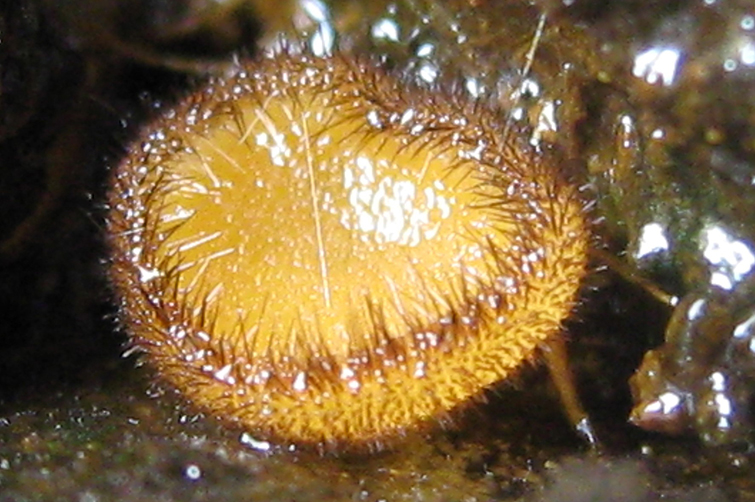29 January 2020
|
Story Leonie Bolleurs
|
Photo Dr Marieka Gryzenhout and Gary Goldman.
 Scutellinia scutellate, commonly known as eyelash cup, molly eye-winker, scarlet elf cap, or eyelash fungus, grows gregariously, or in clusters, and sometimes in dense swarms on moist hardwood logs, sometimes near water or marshy places.
Scutellinia scutellate, commonly known as eyelash cup, molly eye-winker, scarlet elf cap, or eyelash fungus, grows gregariously, or in clusters, and sometimes in dense swarms on moist hardwood logs, sometimes near water or marshy places.
Citizen scientists and nature lovers who are serious and enthusiastic about fungi, can now sit back and relax with a copy of the recently published nature guide titled F
Field guide to mushrooms & other fungi of South Africa (Penguin Random House Struik, Cape Town).
Dr Marieka Gryzenhout, a C-rated scientist and Senior Lecturer in the
Department of Genetics at the University of the Free State (UFS), co-authored the book with
Gary Goldman, amateur mycologist from Cape Town.
The book contains descriptions of 200 species and extensive background information and tips on fungi.
‘They are all beautiful to me’Dr Gryzenhout says fungi are her passion, both small and large. “Interest in mushrooms is currently booming in South Africa, and there was thus a great need to bring out a book with more species than my previous book, Pocket Guide to Mushrooms of South Africa, published in 2010.”
The latter is the first book that Dr Gryzenhout published on South African mushrooms. The book is still available in stores and she is currently revising it.
She does not have a favourite mushroom or fungus, “because they are all beautiful to me”, she states. In the book she published with Goldman, they cover, among others, general information on what fungi are – since very few people know about them. The book also serves as an identification guide, with a range of photographs for each species to make identification easier.
Goldman furthermore added his flair and expertise, with general information on how to forage for mushrooms (hunting for mushrooms) for the dinner table, together with some tasty recipes.
“Citizen scientists are mostly interested in the edible fungi and mushrooms. However, they are beautiful and conspicuous, and it is gratifying to find them and actually being able to identify this rather ill-studied group,” adds Dr Gryzenhout.
Contributions of citizen scientists helpfulShe says, in general, people were overjoyed that another guide on mushrooms was finally published. Dr Gryzenhout continues: “The excellent range of photographs, contributed by a variety of citizen scientists, were stunning and helpful. In the time when the book came out, no less than seven mushroom-related societies were brought to life by citizens due to the rapidly growing interest in fungi and the need for information. A follow-up to the book is already needed!”
She says the book is bought as gifts and prizes in these societies, “which we are really humbled about. Since the book contains a number of first reports for South Africa as well as a range of edible and poisonous fungi, it is also important for biodiversity and human health.”
More than 1 500 copies of the book have already been sold since is appearance.